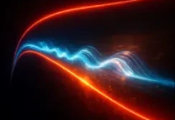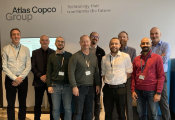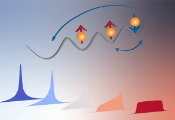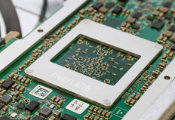LMU Researchers Has Developed a Scheme to Implement Doped Bosonic Quantum Magnets in Tweezer Arrays of Rydberg Atom
August 5, 2024 -- Magnetism is a ubiquitous phenomenon that we all know and experience in our everyday lives, from the kitchen magnets on your fridge to the hard drive in your computer. From a microscopic perspective, the material of our kitchen magnet is composed of "spins", which can be understood as tiny microscopic magnets, that all conspire to align in the same direction, giving rise to a net magnetic moment in the material.
There are a variety of different types of magnetic orderings that arise in solid-state materials, e.g., paramagnetism/diamagnetism where a material is weakly attracted/repelled from a magnetic field, and antiferromagnetism, where the individual spins prefer to anti-align in an up-down-up-down checkerboard-type pattern.
Strongly-correlated materials, such as high-temperature superconductors and heavy-fermion compounds exhibit a rich phase diagram which includes various magnetic orderings, where the electrons carry the magnetic spin degrees-of-freedom. Superconductivity emerges when the individual electrons begin to pair up and display collective behavior. In a superconductor, the electricity can flow without resistance and hence they are of enormous technological importance. How and why the electrons pair up in a high-temperature superconductor, such as in cuprate compounds, remains an open question, but it is commonly believed that the magnetic interactions provide the pairing glue.
New layer of complexity
From a microscopic perspective, the electrons can organize in a checkerboard antiferromagnetic pattern. From this state, one can start to remove individual electrons (or charge carriers), and thereby introduce mobile vacancies distorting the antiferromagnetic ordering: a doped quantum antiferromagnet is obtained. The mobile charge carriers add a new layer of complexity to the quantum magnets, one that is incredibly difficult to describe theoretically and has been subject of intense study for 30 years. It is the competition between the charge carriers' motion and the spin order, which is believed to be crucial for the understanding of the mechanism underlying high-temperature superconductivity in cuprate compounds.
A novel platform for experiments
In a recent paper published in Physical Review Letters, researchers of the Munich Center for Quantum Science and Technology (MCQST) - in collaboration with researchers from Regensburg, Heidelberg and Harvard University - propose a new scheme to emulate doped, bosonic quantum magnets in state-of-the-art cold atom and molecule experiments. Instead of relying on physical tunneling of the mobile dopants, they develop a protocol that utilizes the rich internal structure of atoms and molecules to implement the charge and spin degrees-of-freedom.
This approach offers new tuning knobs for the exploration of doped magnets: On the one hand, they show that the mobility of the defect is highly tunable. On the other hand, tweezer platforms are able to realize flexible geometries from square lattices to non-bipartite lattices and even exotic non-periodic structures.
One implementation scheme, proposed by the group led by LMU researchers Lukas Homeier, Professor Fabian Grusdt and Professor Ulrich Schollwöck, uses three internal rotational states of polar molecules arranged in a tweezer array. The three states encode the configurations spin up, spin down as well as the absence of a charge carrier. By applying a periodic series of microwave pulses to the array, the native Hamiltonian of the system can be transformed into a different target Hamiltonian emulating the motion of dopants in an antiferromagnet.
Another implementation scheme utilizes the strong dipolar interactions between three highly excited Rydberg states. For a carefully chosen set of atomic states, the realized Hamiltonian can be described by an antiferromagnetic t-J model.
"First experimental realizations in collaboration with Antoine Browaeys' group from the Université Paris-Saclay and Institut d’Optique show that our proposed scheme works", says Lukas Homeier, PhD Candidate from the Quantum Many-Body Theory Group at LMU Munich and lead author of the study. "Therefore, the setup provides a novel and realistic platform to study the interplay between antiferromagnetism and mobile charge carriers. The microscopic study of such models in a quantum simulation allows us to address long-standing questions such as the magnetic pairing mechanism in doped, antiferromagnetic Mott insulators and beyond."




































